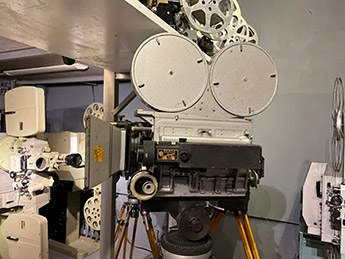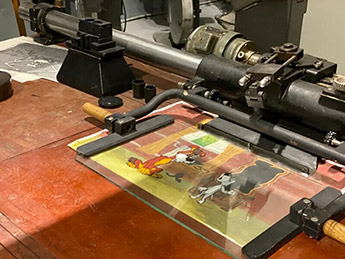"Kinap Space" Cinema Equipment Museum
The idea of creating a collection of Russian cinema projection equipment was born in 2007 when organizing school museums became a great craze in Moscow. The first exhibits were narrow film projectors, amateur and professional, some of which had been found in school storage rooms. As in most schools, the whole display was just a few shelves at the end of the classroom. Later, the museum received a rather large exhibit, a flatbed editing table, that marked the beginning of a serious collection.
My ambitions led me to the largest film festival in Russia — Kinotavr. For the next several years, I worked at film screenings in various capacities, from a movie technician and film inspector to a cinema equipment maintenance man. Of course, this gave me great opportunities for building connections in the world of cinema. So I've started an interesting journey into the world of cinema, and the museum was growing along the way, but I no longer worked as a teacher because of the frequent business trips.
In 2010, the museum got its own room, where there was barely enough space to fit the exhibits from the entire period of the existence of the domestic film industry. We have an almost full range of movie projectors from 1922 to 2003. The collection can be divided into several sections: screening, shooting, production, and animation. All equipment is real, most exhibits are working. In addition to the equipment, there is an archive of movies on 16-, 35- and 70-mm film, as well as perforated piano rolls for player pianos. By the way, there is a working player piano of the silent cinema era on display. In fact, there are 24 such instruments in the museum storage rooms. We used to host regular film screening events in one of the two cinema halls!
Recently, the collection has been moved to the Cinema and Photography Research Institute (NIKFI). The world "museum" doesn't fit a project where all exhibits are in constant use, because it violates the preservation concept. But most of the exhibits have plenty of consumables and spare parts, so the equipment doesn't have to gather dust in a static display but instead can let the audience enjoy its unique features and capabilities. For the first time, visitors can see the entire process of screening, shooting, or editing a film at different times in the 20th century.
The exhibition forms a machine theater of sorts, so we decided to call this place "Space". The word "Kinap" comes from the forgotten name of the cinema equipment factories, it is, in fact, an abbreviation of the words "cinema equipment". Soon we will open a new interactive exhibition, where cinema equipment will be able to present itself!
Calligraphy is the art of deliberate hieroglyphic corruption and transformation in order to reach natural harmony.









